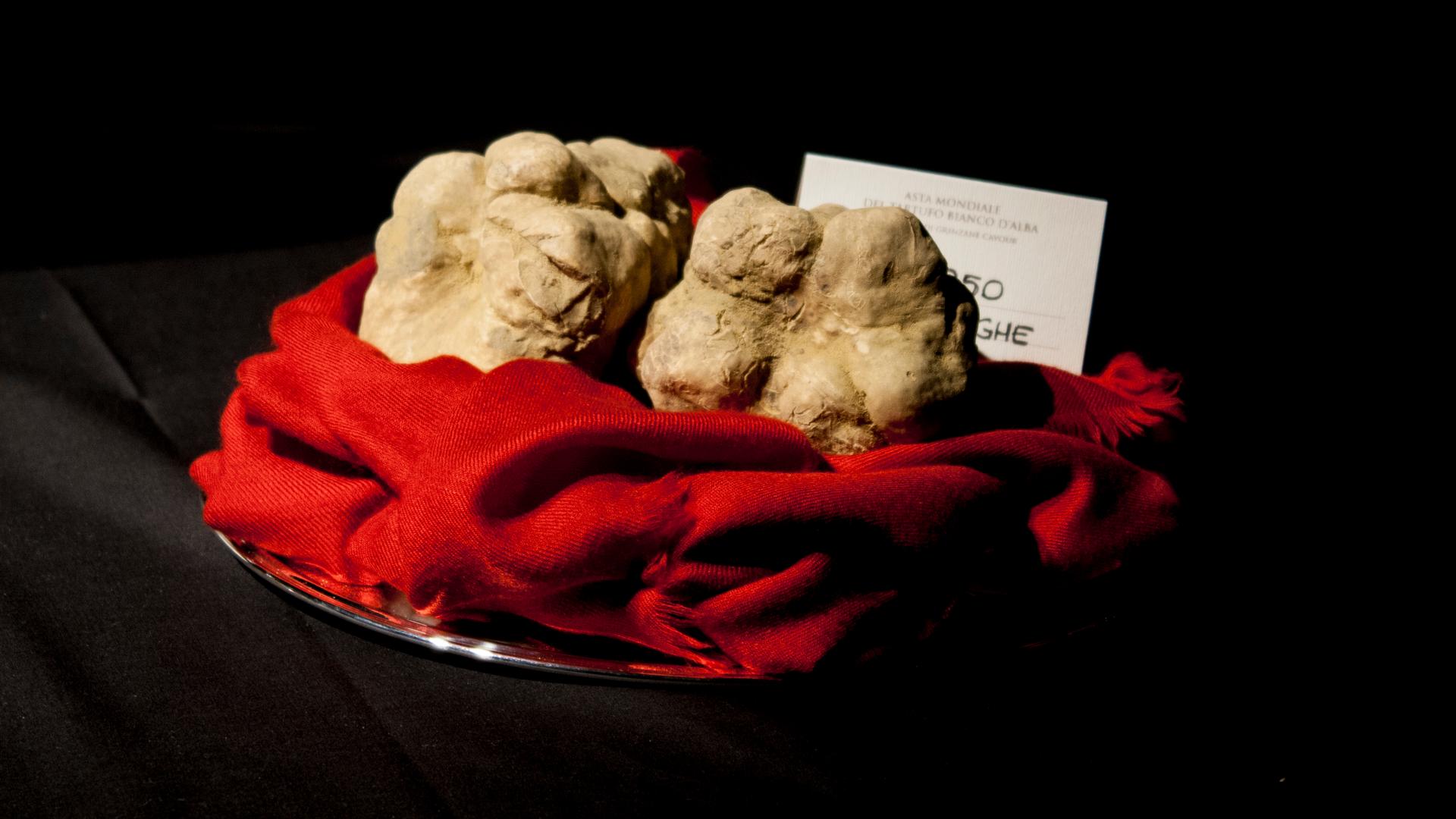It may smell funny, but the elusive white truffle fetches a fortune
Truffles wait on a silver platter to be sold at the International Truffle Auction in Alba, Italy.
How much would you pay for a smelly fungus? In the northern Italian town of Alba, home to the aromatic white truffle, there is seemingly no price too large.
Last week at the International White Truffle Auction, wealthy bidders from around the globe competed for the biggest truffle of the season, some checking into the auction from far away via Skype. One bidder from Hong Kong offered a jaw-dropping $120,000 for a two-pound truffle the size of a mango.
Sitting on a bed of velvet were the elusive white truffles; lumpy, smelly fungi that look like ugly potatoes and make Michelin-star chefs salivate.
“Technically it’s an underground mushroom,” said Mauro Carbone, the director of Italy's National White Truffle Research Center, and the official "nose" of the auction. “But, for everybody, it’s a smell, a unique, fantastic smell.”
Carbone grabbed one off the silver platter and held it to his nose. It smelled of garlic, onion and honey. One truffle alone, he said, can have up to 140 different smells.
Since 1999, the rich and über-rich have competed for Alba’s white truffles at the international auction. All proceeds go the Candiolo Cancer Research Center in Italy and Mother Choice in Hong Kong. This year, China took home the most coveted truffle, with bidders paying a total of $360,000 for a dozen sizeable specimens.
“The white truffle is so expensive because it’s very difficult to find,” Carbone said. “You can’t cultivate it, you can only find what nature wants to produce.”
"Truffles are a sort of magic, transported on a plate. Because truffles don’t have strong flavors. What they do have are bold aromas that intensify with certain ingredients that we use. But it’s almost like an intellectual pleasure, rather than a physical one. Truly magical."
While the auction is a charity event, said Carbone, they can sell for up to double the price of gold.
White truffles are so sought after, in part because they only come out once a year, during October and November. Master Chef Marco Forneris says you should believe the hype about the funky mushroom.
"Truffles are a sort of magic, transported on a plate," he said. "Because truffles don’t have strong flavors. What they do have are bold aromas that intensify with certain ingredients that we use. But it’s almost like an intellectual pleasure, rather than a physical one. Truly magical."
Magical? Maybe. Elusive, definitely. If you want one without spending a small fortune, you need to hunt for it. Here in Alba, everyone knows someone who hunts.
Walter Tedesco has been scavenging the woods around Alba for five years. His secret weapon is a perky, mixed-breed canine called Leo.
Nature has chosen Piedmont’s damp and foggy forests as the perfect climate for truffles. Even in this age of DNA-mapping, science hasn’t figured how and why white truffles sprout around the roots of these trees.
So, Tedesco said, competition is fierce.
“Not just because of how much they’re worth, but because you want to find the best one, the most prestigious one,” he said.
That’s why hunters go out at night, without a flashlight. And if they happen to find a truffle, they never reveal the exact location. Because where one sprouts, another will likely follow.
Leo poked his nose under hazelnut, oak and poplar trees, and within minutes began clawing frantically at the damp earth. He had sniffed out a truffle the size of a mandarin a few inches underground. Walter dug it out and smelled it. It was too small for the international truffle auction, but still worth about $100 dollars. He could sell it, but this time, Tedesco said, he’d rather bring it home and eat it thinly shaved over a poached egg or his wife’s fresh pasta.
